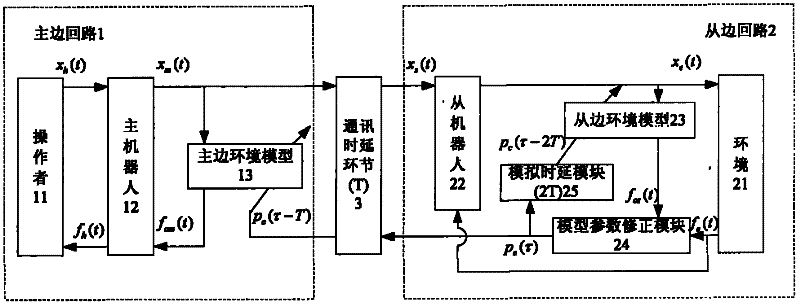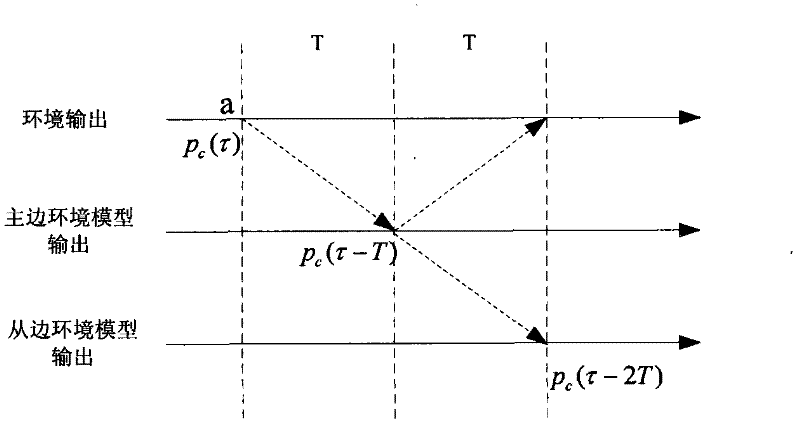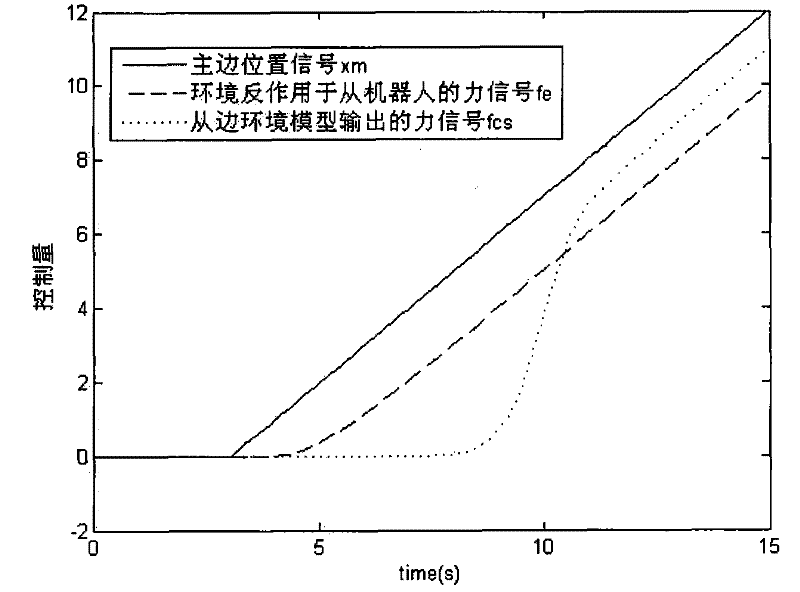Teleoperation robot adaptive control method based on master-slave reference model
A teleoperated robot and adaptive control technology, applied in adaptive control, general control system, control/regulation system, etc., can solve problems such as reduction, operator error judgment, unstable operation performance of remote operating system, etc.
- Summary
- Abstract
- Description
- Claims
- Application Information
AI Technical Summary
Problems solved by technology
Method used
Image
Examples
Embodiment Construction
[0037] The self-adaptive control method for a teleoperated robot based on the master-slave reference model includes: a master-side loop 1, a slave-side loop 2 and a communication delay link 3, and the master-side loop 1 consists of an operator 11, a master robot 12 and a master-side environment model. 13, the slave side loop 2 is composed of the environment 21, the slave robot 22, the slave side environment model 23, the model parameter correction module 24 and the simulation delay module 25, the master side environment model 13 and the slave side environment model 23 have the same structure,
[0038] In a structured environment, it is known that the communication delay link 3 has a delay, and T is the delay amount of the communication delay link 3, and T=1s in the simulation. In a structured environment, you have a certain understanding of the environment to be faced, so you can establish a more accurate environment model, but it is impossible to be completely consistent. The...
PUM
 Login to View More
Login to View More Abstract
Description
Claims
Application Information
 Login to View More
Login to View More - R&D Engineer
- R&D Manager
- IP Professional
- Industry Leading Data Capabilities
- Powerful AI technology
- Patent DNA Extraction
Browse by: Latest US Patents, China's latest patents, Technical Efficacy Thesaurus, Application Domain, Technology Topic, Popular Technical Reports.
© 2024 PatSnap. All rights reserved.Legal|Privacy policy|Modern Slavery Act Transparency Statement|Sitemap|About US| Contact US: help@patsnap.com










